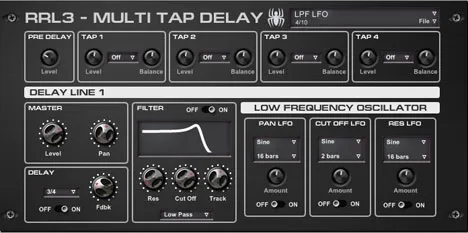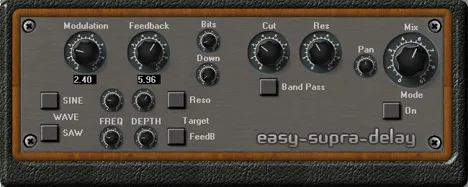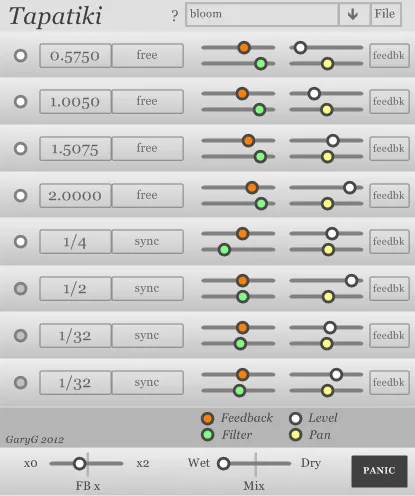Review of RRL3 Plugin by Idrisoft: Versatile Synchronized Delay
Hello, music enthusiasts and sound experimenters! Today, we’ll delve into the world of time-based effects with the RRL3 plugin from the developer Idrisoft. This isn’t just another delay; it’s a multifunctional tool with tempo synchronization capabilities for your project, opening up vast possibilities for creating rhythmic echoes and complex soundscapes. RRL3 is ideal for adding depth, movement, and unique character to your audio tracks, whether they’re guitar parts, synth pads, vocals, or drums.
Main Functions and Controls
RRL3 stands out for its flexibility, thanks to its well-thought-out structure and intuitive controls. Let’s take a closer look at each section of this powerful effect:
Pre-delay Section
- Pre-delay: This control sets the level of the “dry” (unprocessed) signal that passes through the RRL3 plugin. It allows mixing the delay output with the original sound.
Taps Section (Echoes)
The plugin is equipped with four independent taps (echoes) that trigger before the main delay line. Each tap has its own settings:
- Level: The volume level of a specific tap.
- Synced note length: Synchronization of the tap’s length with your project’s tempo (e.g., 1/4, 1/8, 1/16 notes, etc.). This is crucial for creating rhythmic effects.
- Balance: The pan of the tap in the stereo field, allowing you to distribute the taps in space.
These four taps allow you to create a complex initial delay pattern before the signal reaches the main delay line.
Delay Line 1 and Master Section
- Delay Line 1: This section processes the signal after it has passed through the four initial taps.
- Master: Contains overall volume (Master Level) and pan (Master Pan) controls for the entire delay line output.
Delay Section
Here are the main settings for the main delay line:
- Note length: Selection of the delay duration, also synchronized with the project’s tempo.
- Feedback: Adjusts the amount of feedback, i.e., how much of the processed signal is fed back into the delay line. High feedback values can lead to long, decaying echoes or even self-oscillation.
- On/Off switch: The on/off button for the main delay line.
Filter Section
This powerful section allows applying a filter to the delay signal, shaping its timbral characteristics. Four filter types are available:
- Low Pass
- High Pass
- Band Pass
- Band Reject
The Resonance control adds a peak at the filter’s cutoff frequency. Be careful with high resonance values, especially with Band Pass and Band Reject filters, as this can lead to strong self-oscillation and uncontrolled signal level growth!
LFO (Low-Frequency Oscillator) Section
RRL3 includes an LFO section for adding modulation to the delay effect. The LFO can control:
- Cut-off: The cutoff frequency of the filter.
- Resonance: The resonance level of the filter.
- Pan: The pan of the main delay line.
The cycle period of each LFO can be synchronized with a specific number of bars in your project, allowing you to create rhythmic modulation effects, such as a filter “pump” or rhythmic panning.
Summary
RRL3 by Idrisoft is a flexible and functional multi-tap delay plugin with synchronization that offers wide possibilities for creative work with sound. Thanks to independent taps, a powerful filter with resonance, and LFO modulation capabilities, you can create both classic rhythmic delays and experimental sound textures. It’s an excellent tool for adding space, movement, and uniqueness to your mixes. Try RRL3 and unlock the potential of time-based effects in your musical creations!



